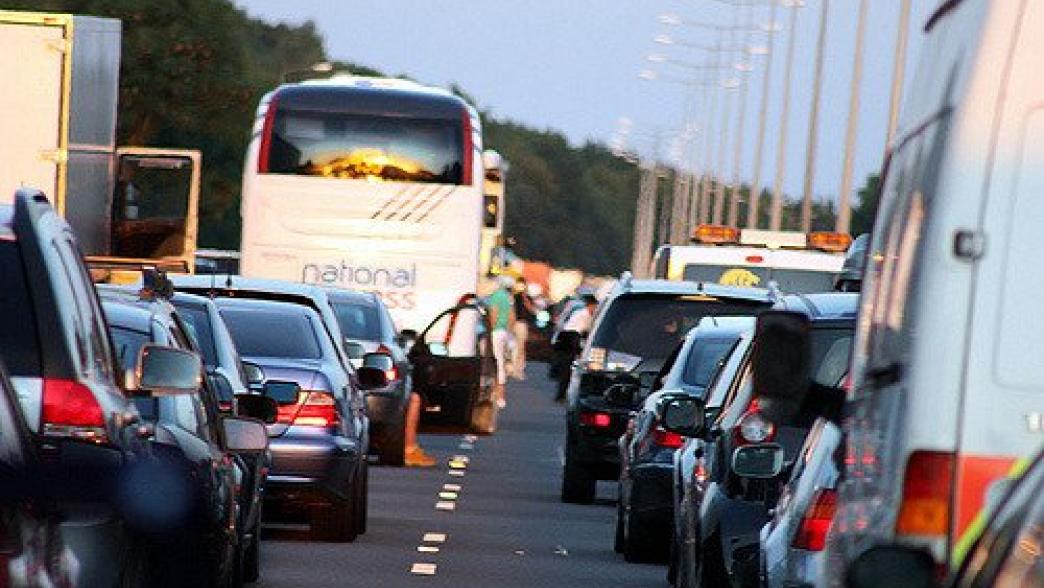
The NAO report into an HMRC customs programme highlights some of the challenges of implementing Brexit. Joe Owen agrees that to prepare the UK borders for ‘day one’, government must overcome significant delivery challenges.
The National Audit Office (NAO) report lifts the lid on the troubles of HMRC’s Customs Declaration Service (CDS) programme, the ICT system that is critical to the Government’s plan for customs after Brexit. The programme is struggling to balance the uncertain outcome of Brexit with strict timelines and limited contingency options.
Our upcoming paper, Implementing Brexit: Customs, looks at the job facing Whitehall to prepare the UK’s borders for Brexit and touches on technology as well as areas such as policy, co-ordination and engagement. Today’s NAO report draws out some of the major challenges.
HMRC needs to implement the system by March 2019, but the deal could change what it needs to do.
The UK Government has made it clear that a customs arrangement is a priority for them in the negotiations. But what exactly a customs arrangement could look like is unclear. It might be expansive and comprehensive, involving the formation of a UK-EU customs union, or it could follow more traditional customs co-operation agreements found in other trade deals. Either way, it will put new pressures on the UK’s customs process and CDS. As the NAO says, a post-Brexit customs arrangement could need a new data model or simply a tweak to tariffs.
Capacity is the big challenge. CDS will need to provide capacity for an estimated 255 million declarations a year, around 200 million more than the current system provides. There are reports that CDS was originally designed to provide enough capacity for about half of the expected post-Brexit volume, but the Government appears confident that, if delivered, CDS will manage it.
As negotiations go on and details of the final exit deal become clear, there will be temptation to tinker with CDS beyond just capacity; adding a bit more functionality here, reducing a bit of potential friction there and using technology to minimise disruption on exit. The tinkering and changing requirements to date is part of the reason the programme delivery is already “in doubt”.
Government must be bullish in protecting the system and ensuring delivery, even if that means pushing pressure on to other parts of the system for a short period. The priority should be delivering a functioning CDS for ‘day one’ post-Brexit, even if further work is required to upgrade it.
“Innovative technology” is not the solution to the Brexit customs problem.
But the Government is talking about delivering more IT on top of this. “New digital technology” and ”innovative ICT” is often suggested as the guarantor of frictionless trade. Brexit Secretary David Davis told the Commons Exiting the EU Committee that it was a key part of the plan for a soft border in Ireland and could be used elsewhere.
But this is not a viable answer to the Brexit border question, at least in the short term. The story of CDS, a system designed well before Brexit and already four years in the making, proves that.
Big ICT programmes take time. At the point the UK formally leaves the EU in March 2019, it will have had two years and nine months to design, build and implement new Brexit-related ICT above and beyond CDS. Based on HMRC’s experience with CDS, and most other big ICT programmes in government, that’s not long enough. In last year’s Government Major Project Portfolio (the biggest, scariest and most innovative programmes in the public sector), ICT programmes had an average duration of about five and a half years.
Big ICT programmes are also risky. CDS is not alone in its challenges, almost half of the ICT projects in the portfolio are rated either ‘Red’ or ‘Amber/Red’, meaning successful delivery is either unachievable or in doubt. Delays are common and often last years.
Delivering these sorts of technology projects, whether in government or the private sector, is difficult. Government should not rely on non-descript modern technology to solve its knottiest Brexit problems, particularly when HMRC’s hands are already full with CDS and Making Tax Digital.
Technology is just one part of the customs puzzle.
The NAO report shows that UK customs is about a lot more than HMRC and its ICT programme. A large number of government bodies are involved in the process, from licensing to inspections, as well as a myriad of private sector organisations. Freight forwarders, community systems providers and port authorities will all need to adapt to the new system, as will UK importers and exporters.
And then there is the EU and its preparation for change. Ending the UK’s membership of the Single Market and/or Customs Union will precipitate a change to the way EU exporters interact with the UK and the way UK exporters are treated at the border. Calais and Rotterdam need to be ready and, judging by David Davis’s evidence, the UK is not convinced they will be. In that sense, a customs arrangement is as much a canyon as it is a cliff-edge.
We explore these themes in our upcoming report, highlighting some of the challenges facing government and their options for managing them.
- Topic
- Brexit